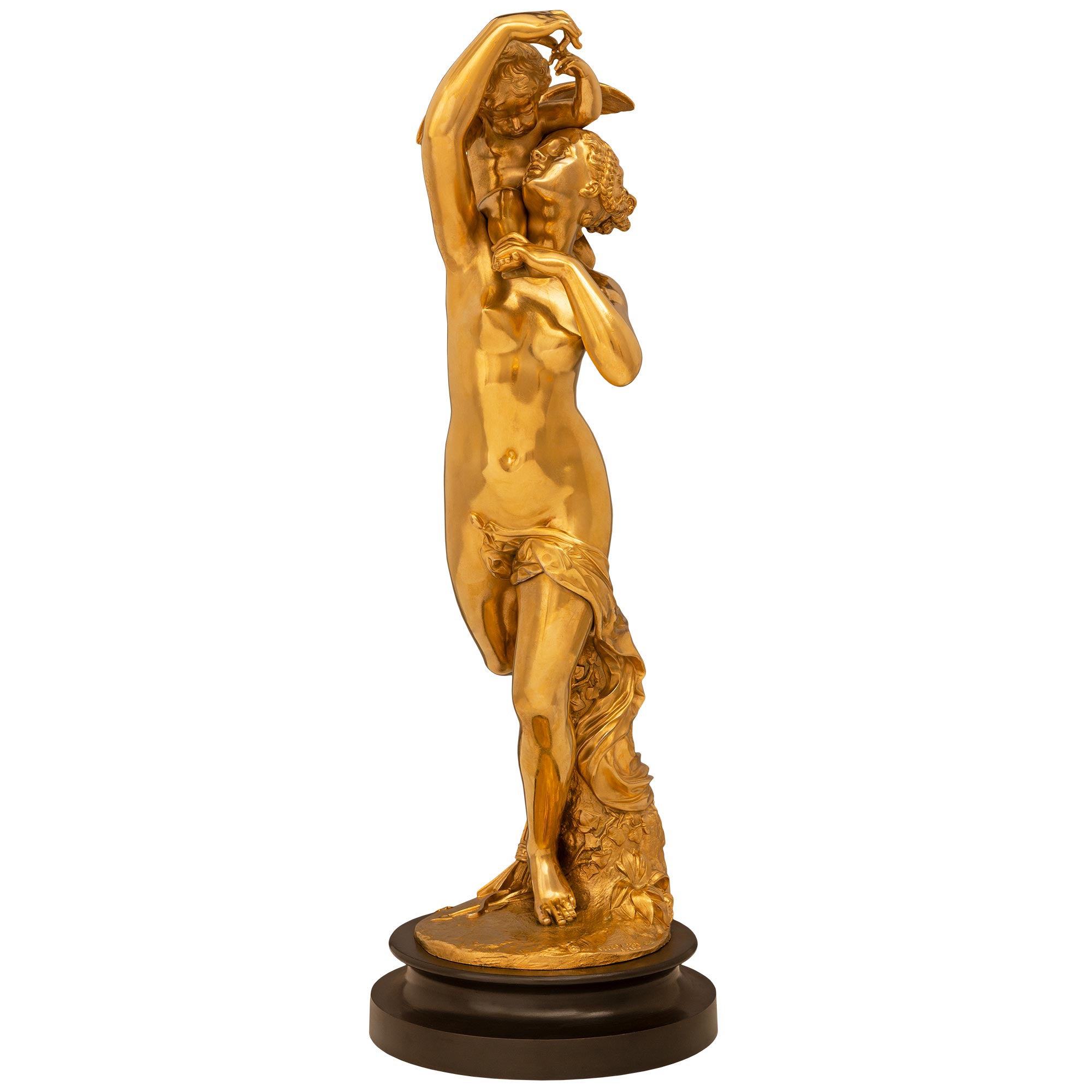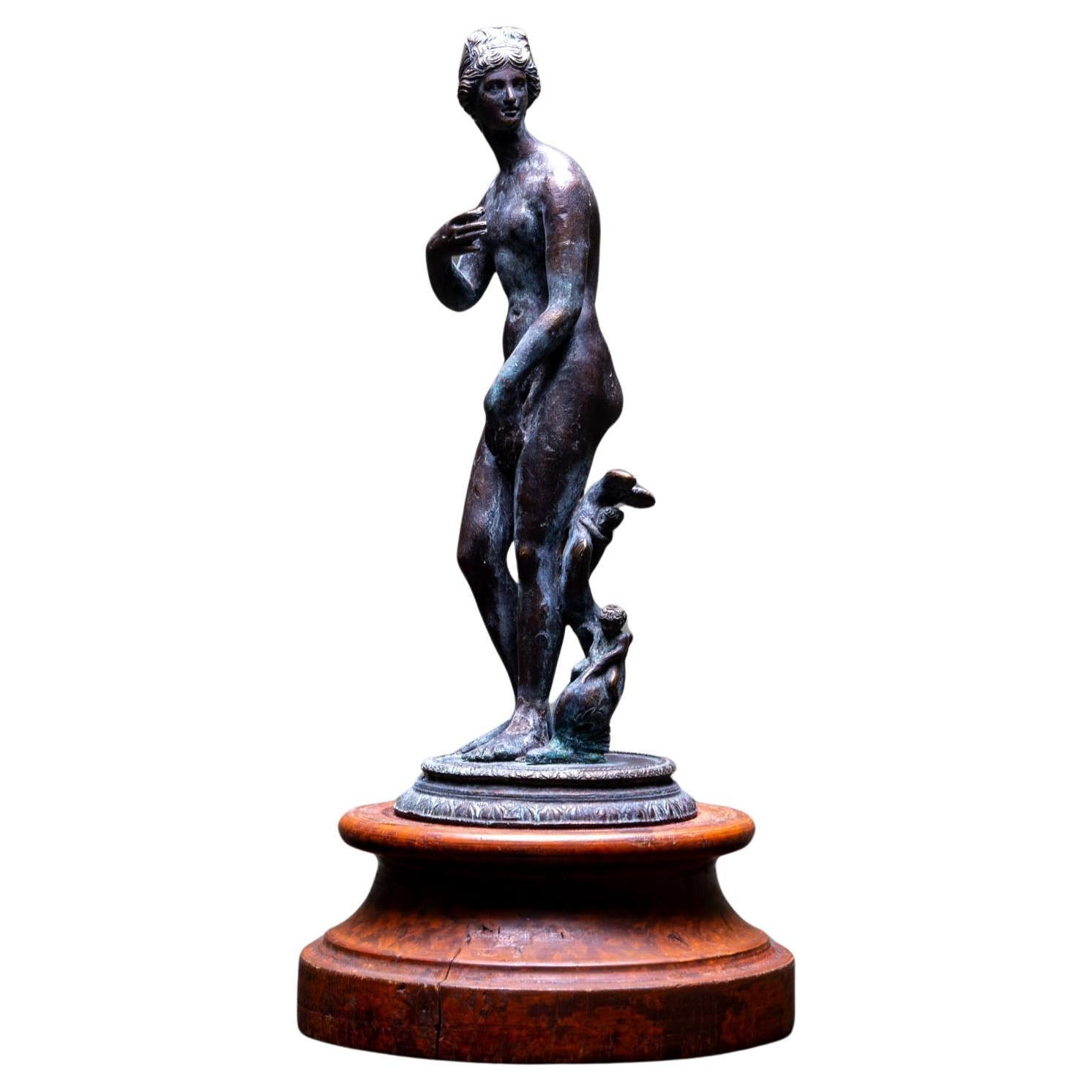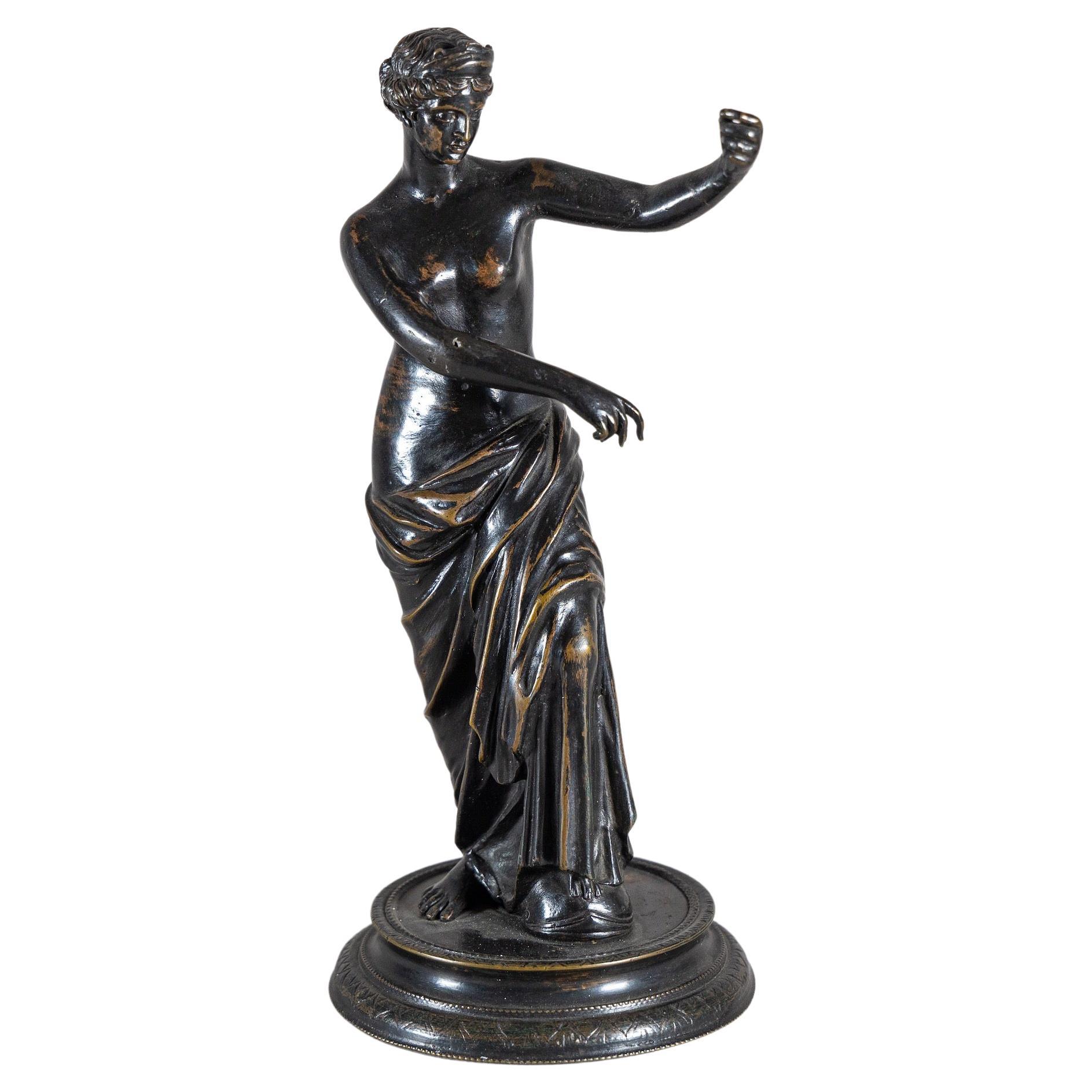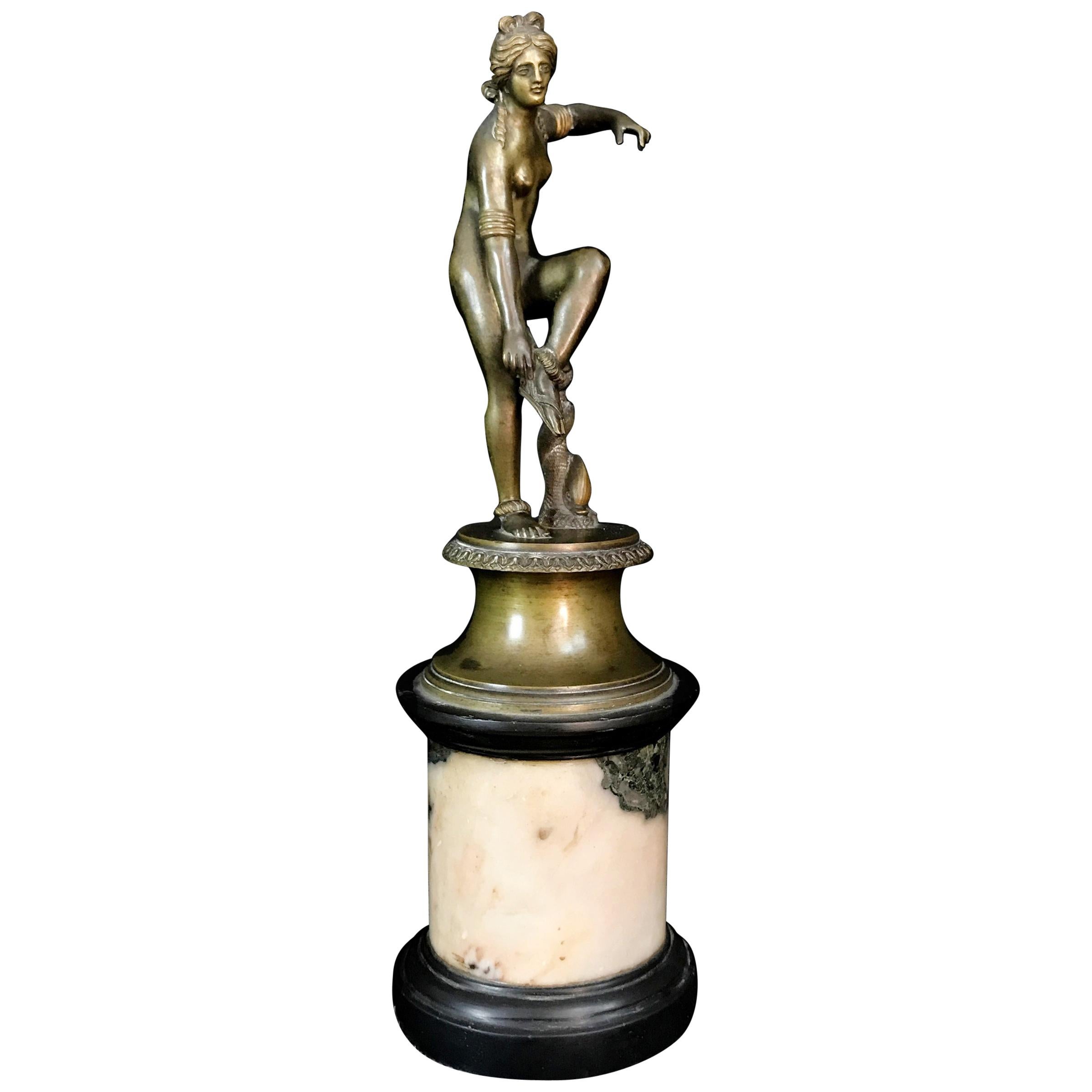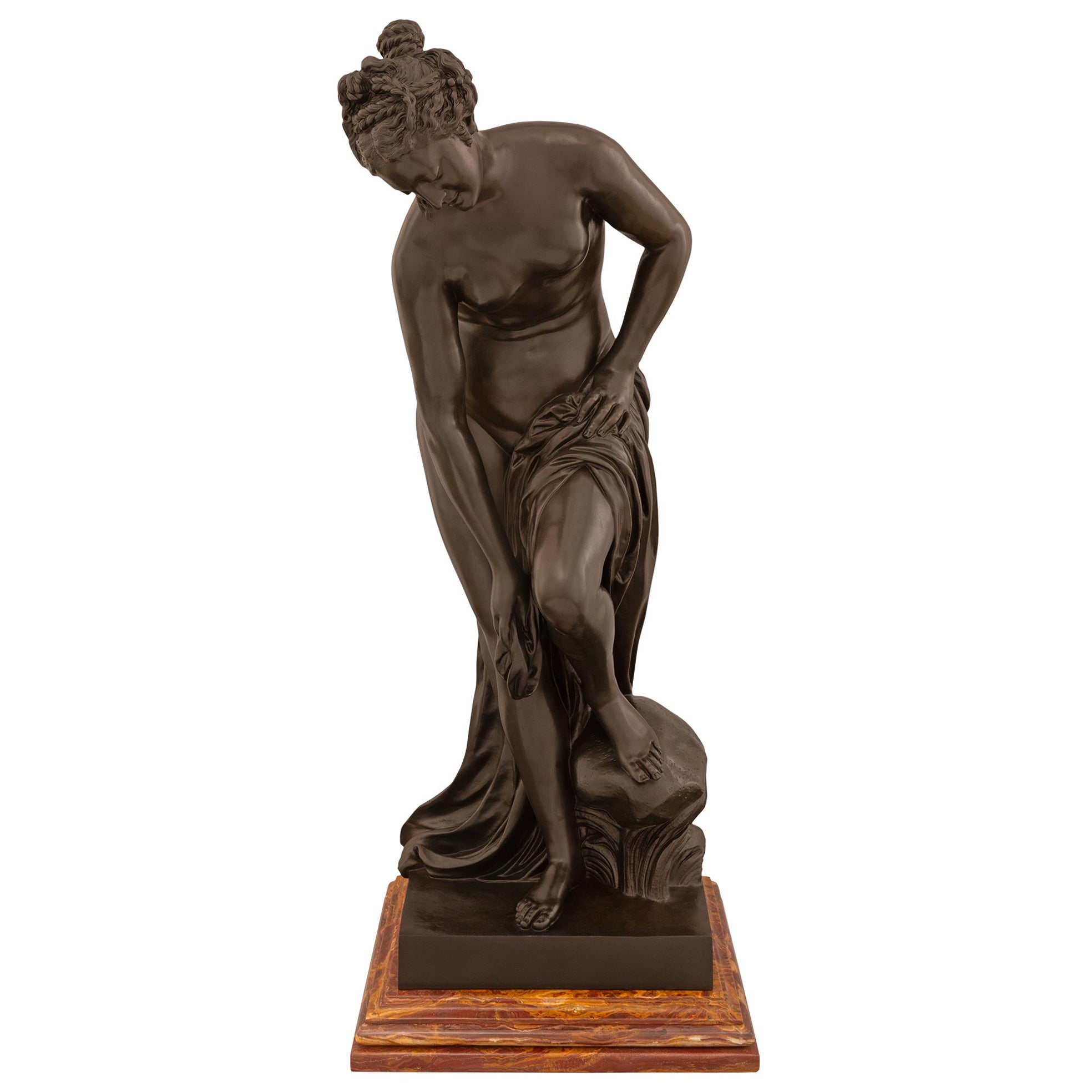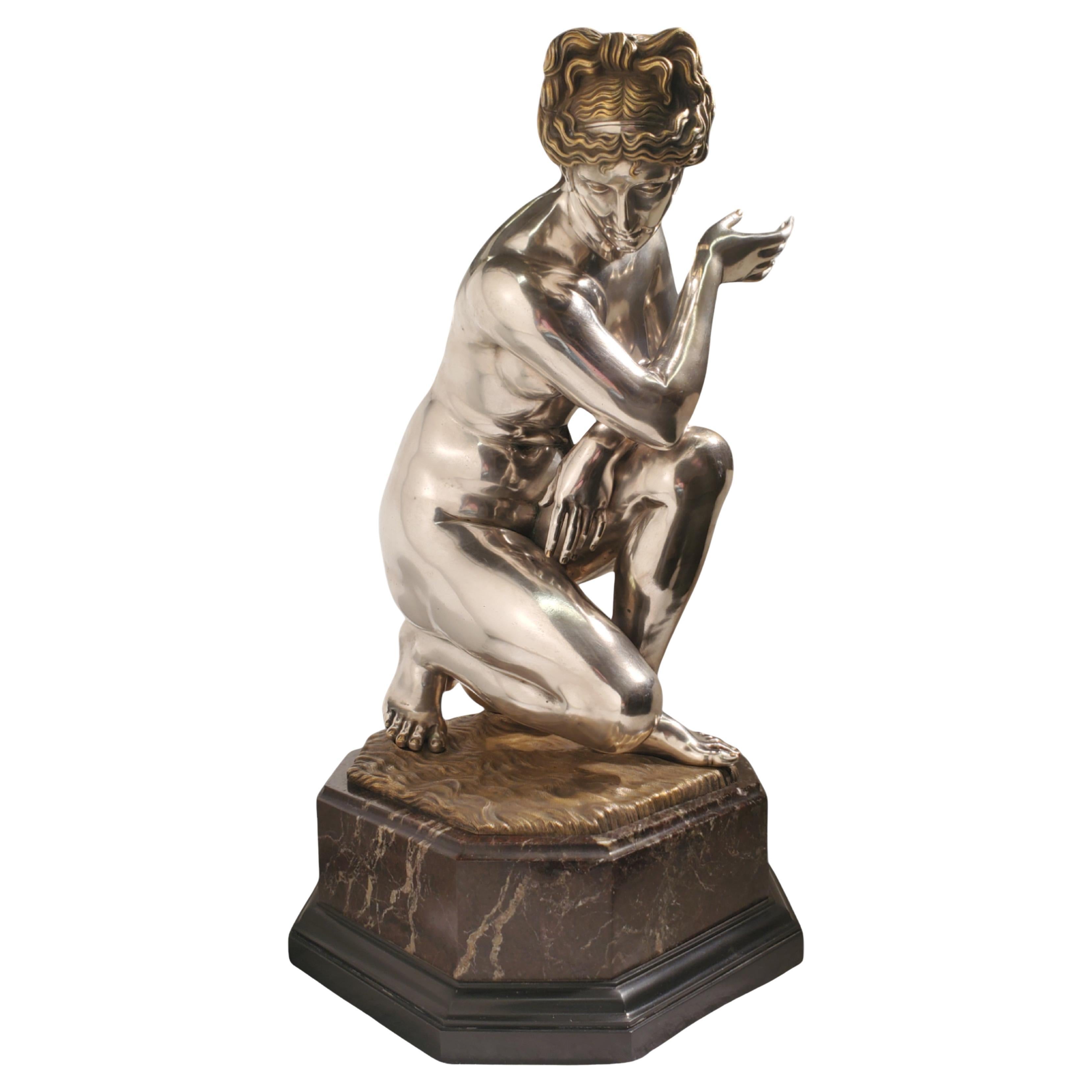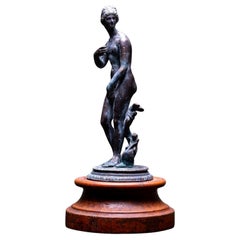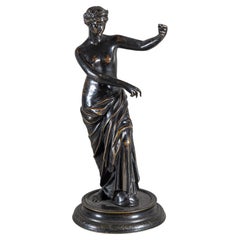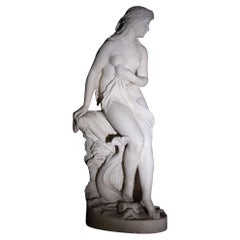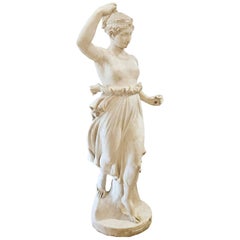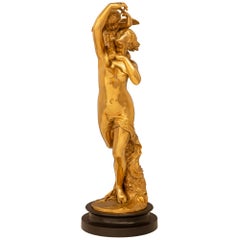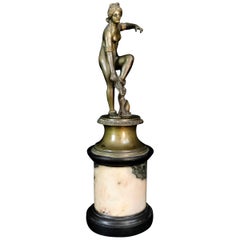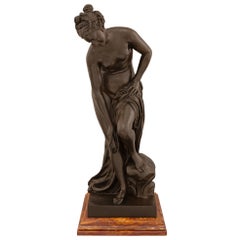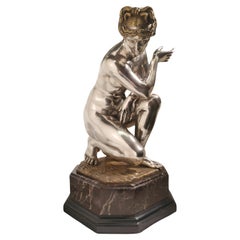Items Similar to Venus with the Turtle After Antoine Coysevox, Probably, France, 19th Century
Want more images or videos?
Request additional images or videos from the seller
1 of 11
Venus with the Turtle After Antoine Coysevox, Probably, France, 19th Century
$4,619.17
£3,393.35
€3,900
CA$6,342.27
A$7,108.60
CHF 3,721.45
MX$87,715.92
NOK 46,748.37
SEK 44,005.07
DKK 29,676.12
Shipping
Retrieving quote...The 1stDibs Promise:
Authenticity Guarantee,
Money-Back Guarantee,
24-Hour Cancellation
About the Item
Representation of the sitting Venus with turtle after the original by Antoine Coysevox (1640-1720, Louvre 1686) on a round black truncated column with red profiled base. Marble, bronze fire-gilt. (Measures: Height plinth 19 cm).
- Creator:Antoine Coysevox (Sculptor)
- Dimensions:Height: 16.15 in (41 cm)Diameter: 9.06 in (23 cm)
- Style:Empire (Of the Period)
- Materials and Techniques:
- Place of Origin:
- Period:
- Date of Manufacture:19th Century
- Condition:Wear consistent with age and use.
- Seller Location:Greding, DE
- Reference Number:Seller: 078-04701stDibs: LU1014216523132
About the Seller
4.9
Vetted Professional Seller
Every seller passes strict standards for authenticity and reliability
Established in 1987
1stDibs seller since 2013
502 sales on 1stDibs
Typical response time: 16 hours
- ShippingRetrieving quote...Shipping from: Greding, Germany
- Return Policy
Authenticity Guarantee
In the unlikely event there’s an issue with an item’s authenticity, contact us within 1 year for a full refund. DetailsMoney-Back Guarantee
If your item is not as described, is damaged in transit, or does not arrive, contact us within 7 days for a full refund. Details24-Hour Cancellation
You have a 24-hour grace period in which to reconsider your purchase, with no questions asked.Vetted Professional Sellers
Our world-class sellers must adhere to strict standards for service and quality, maintaining the integrity of our listings.Price-Match Guarantee
If you find that a seller listed the same item for a lower price elsewhere, we’ll match it.Trusted Global Delivery
Our best-in-class carrier network provides specialized shipping options worldwide, including custom delivery.More From This Seller
View AllAphrodite on a wooden plinth, Naples, 2nd half 19th century
Located in Greding, DE
Small Italian bronze of Aphrodite or Venus on a patinated wooden base. Size of the statuette: 23 cm.
Category
Antique Late 19th Century Italian Figurative Sculptures
Materials
Bronze
Bronze Statuette of Venus, 2nd Half 19th Century
Located in Greding, DE
Small dark patinated figure of Venus on round profiled plinth.
Category
Antique Mid-19th Century European Grand Tour Figurative Sculptures
Materials
Bronze
Robert Cauer D. Ä. Venus with Dolphin, Rome, 1874
Located in Greding, DE
Almost life-size depiction of Venus with dolphin by Robert I Cauer (1831-1893). Full sculptural execution in marble. Inscription on the base "R. Cauer" as well as date 1874 and place...
Category
Antique 1870s Italian Figurative Sculptures
Materials
Marble
Sculpture of Flora, Italy, circa 1880
Located in Greding, DE
Plaster sculpture of flora after a classical original with windswept skirt and pinned up curly hair.
Category
Antique 1880s Italian Neoclassical Statues
Materials
Plaster
Hermes Bronze, Sig, Sabatino, Italy, 1882
By Sabatino Naoloi
Located in Greding, DE
Bronze of Hermes with petasos on stylized landscape base with shell decoration on round marble plinth. There signed Sabatino, Naples, 1882.
Category
Antique 1880s Italian Neoclassical Revival Figurative Sculptures
Materials
Bronze
$3,600 Sale Price
20% Off
Reclining Bronze Putto, 19th Century
Located in Greding, DE
Small reclining putto of gilt bronze in an expansive gesture. The small bronze is mounted on a dark marble base. The gilding is rubbed in places.
Category
Antique 19th Century Figurative Sculptures
Materials
Bronze
You May Also Like
French 19th Century Bronze & Ormolu Statue Allegorie De L'amour Maternel
Located in West Palm Beach, FL
A wonderful and finely detailed French 19th century Ormolu and Patinated Bronze statue titled Allegorie de L'amour Maternel, signed Fraikin and Vittoz. The stunning statue's title me...
Category
Antique 19th Century French Figurative Sculptures
Materials
Bronze, Ormolu
18th Century, Italian Bronze Sculpture with Venus Removing Her Sandal
Located in IT
18th Century, Italian Bronze Sculpture with Venus Removing Her Sandal
This bronze sculpture represents Venus as she takes off her sandal. Made in the neoclassical era in Italy, it consists of the bronze sculpture of the Greek goddess Aphrodite, Venus for the Romans. The naked goddess, getting ready for the bath, makes the very human gesture of loosing a sandal.
The left arm is raised, as if to compensate the position while maintaining the balance. Next to her, wrapped around a rocky spur, is a dolphin, an animal iconographically linked to the goddess because of his birth from the foam of the sea. The figure rests on a cylindrical and concave bronze base, with finely chiselled reserves. The bronze element is in turn resting on a africano marble cylinder with black of Belgium marble base.
Venus is one of the major Roman goddesses primarily associated with eros and beauty. It is traditionally understood as the equivalent of the Greek goddess Aphrodite, goddess of beauty, physical and passionate love, among the major deities of Olympus. His birth is due to a dramatic event: Uranus, Heaven, is mutilated by his son Cronus, who punishes him for the wrongs inflicted on his mother. The torn limbs of Uranus fall into the sea and fertilize the foam of the waves of the island of Cyprus. From the waves emerges in all its splendor Aphrodite. Since the 4th century, Aphrodite begins to be represented with characters more human and less heroic. Praxiteles with the 'Aphrodite Cnidia,' for the first time in the history of sculpture, depicts her naked, as she prepares to take a ritual bath.
From the Pressitele’s model descend the Capitoline Venus (Capitoline Museums of Rome) and the Venus de’ Medici (Uffizi Museum of Florence) accompanied by Eros on the back of a dolphin.
This vein also includes a subject frequently attested in the Hellenistic and then Roman Ages, with examples in bronze, marble and terracotta: the Aphrodite who fastens the sandal.
The luck that this type of representation had in the following centuries is demonstrated by the vast number of sculptures that represent it. In this bronze work the goddess resumes the position of Oplontis’s Naked Venus: here Venus holds an apple in her left hand, a reminder of her victory in the beauty contest in which she prevailed over Minerva and Juno by judgment of Paris. In our bronze instead, the hand seems to want to shake the apple, which however has not been molded. Perhaps the bronze is inspired by another work, such as the bronzes kept in the archaeological museum of Padua. Another example is the famous 'Venus in bikini" found in Pompeii, so-called because it depicts the goddess in the same pose, but with the breasts and hips covered by bands painted in gold.
The dolphin depicted next to it could be inspired instead to the Medici Venus...
Category
Antique Late 18th Century Italian Neoclassical Figurative Sculptures
Materials
Marble, Belgian Black Marble, Bronze
French 19th Century Patinated Bronze And Marble Statue Of Venus At The Bath
Located in West Palm Beach, FL
A large scaled French 19th century patinated Bronze and marble statue of Venus at the Bath. Venus is raised by a handsome mottled Sanguine Oran Cipolin marble base and is holding a d...
Category
Antique 19th Century French Figurative Sculptures
Materials
Marble, Bronze
An original 1850 Neoclassical parcel gilt, silvered bronze statue of Venus
Located in New York City, NY
This exquisite mid-nineteenth century sculpture features a nude woman in silvered bronze with parcel gilt accents. The female figure embodies grace and allure, reminiscent of the god...
Category
Antique Mid-19th Century French Neoclassical Figurative Sculptures
Materials
Marble, Belgian Black Marble, Griotte Marble, Silver Plate, Bronze
French 19th Century Louis XVI Style Ormolu Statue of a Maiden
Located in West Palm Beach, FL
A high quality and most charming French 19th century Louis XVI st. ormolu statue of a maiden with winged cherub signed Musée de Sèvres. The statue is r...
Category
Antique 19th Century French Louis XVI Figurative Sculptures
Materials
Carrara Marble, Ormolu
Early 19th Century Continental Grand Tour Bronze Sculpture of Venus de' Medici
Located in Nottingham, GB
This captivating early 19th-century Continental Grand Tour bronze sculpture of Venus de' Medici is a stunning representation of classical beauty and neoclassical artistry. Cast with remarkable detail, the figure portrays the renowned statue of Venus, revered for its grace, sensuality, and timeless elegance. The finely executed bronze finish, with its warm, aged patina, further enhances the sculpture's antique charm, making it a remarkable piece that captures both historical significance and artistic mastery.
The Grand Tour, a traditional journey undertaken by young Europeans in the 18th and 19th centuries to study classical art and culture, was an era that saw an increasing appreciation for classical sculptures, and this piece is a quintessential example of the era's influence on European decorative arts. Whether displayed as a centerpiece or as part of a larger collection, this Venus de' Medici sculpture evokes the grandeur of ancient Rome and the Renaissance period, embodying the pursuit of beauty that defined the neoclassical movement.
The Venus de Medici is an ancient Greek statue that represents the goddess Aphrodite (Venus in Roman mythology). It is a marble sculpture, dating back to the 2nd century BCE...
Category
Antique Early 19th Century Figurative Sculptures
Materials
Siena Marble, Bronze
More Ways To Browse
Marble Turtle
Antoine Coysevox
Royale Living Vintage Furniture
Vintage Ceramic Girl Figurines
Vintage Venetian Masks
Art Deco Sculpture Of Lady Dancing
Baroque Virgin Sculpture
Botticelli Sculptures
Bronze Harlequin
Bronze Nude Maiden
Bronze Roman Warriors
Chinoiserie Nodders
Cold Painted Bronze Girl
Discus Thrower
Faun With Flute
Fayral Art
French 18th Century Wood Angel
Goddess Isis
